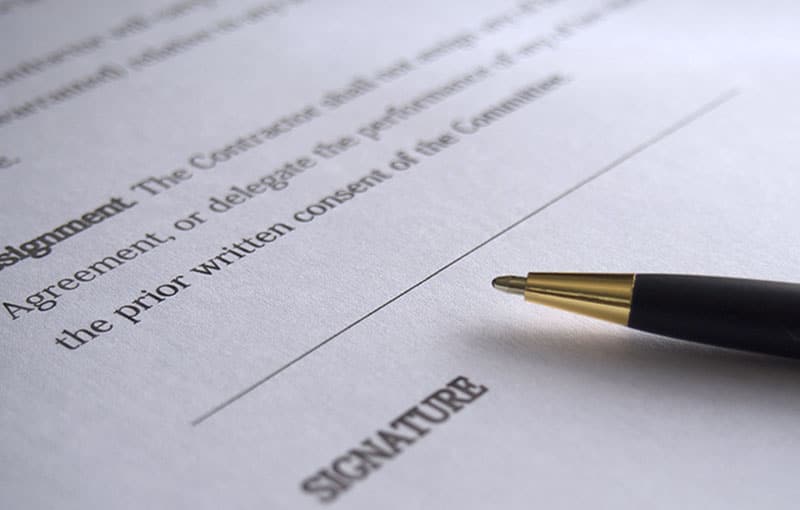Get The Business Legal Help You Need
Best Trademark Protection Law Firm In New York
Imagine that you and your family have spent several years starting a business, creating a clever name and logo, and have found your business niche. Imagine that you finally have enough income that can be invested into nice business cards and delivery materials, all stamped with your logo. Then one day while visiting a neighboring state, you stumble across a storefront with the exact same business name, with similar products for sale. What is your next step moving forward? Who is in the wrong? Keep reading to learn more.





Why Are Trademarks Important?
Understanding how trademarks work is critical to your business, especially when it comes to competing against other businesses on the market. If you are facing or have faced a situation like this, you have likely experienced trademark infringement.
Before you contact the nearest New York intellectual property attorney to pursue legal action, it is important to understand what infringement is so that you are aware when it has actually occurred.
When you own a business, having a thorough understanding of trademarks and how they work is critical to your success when competing against similar businesses on the market.
What Is a Trademark?
According to the United States Patent and Trademark Office, “[a] trademark is a word, phrase, symbol, and/or design that identifies and distinguishes the source of the goods of one party from those of others. . . .
Some examples include: brand names, slogans, and logos. The term ‘trademark’ is often used in a general sense to refer to both trademarks and service marks.” Though it is not legally required to register your trademark, it is highly recommended so that your brand has utmost protection from infringement or other trademark offenses.
Who Enforces Trademark Laws?
Though trademarks originally developed under state common law, over time, the federal government also began to regulate trademark laws. Today, the federal government is the primary enforcer of trademark protection and registration. Amended in 1996, the 1946 Lanham Act is the main federal statute regarding trademark infringement.
New York Trademark Protection Laws
State-regulated trademarks in New York are governed by the New York General Business Law Article 24, Section 360. If you plan to remain exclusive to New York, state registration will be sufficient for your needs. However, getting a federally recognized trademark is a wiser choice that does not take much more work, as your brand will receive broader protection and numerous other benefits that are discussed below.

Top-Rated New York Trademark Lawyers
Denton Peterson Dunn is an excellent law firm with experienced trademark litigation attorneys and infringement defense lawyers. Whether you need to register a trademark with the US Patent and Trademark Office, pursue legal action, or simply have your questions answered, contact our top-rated trademark law firm in New York today.
Andre L. – New York
“I don’t believe that we could have selected a better person to represent us in our case! Brad is very competent, knowledgeable about the law and yet quite accessible at the same time. We always knew what was the status of our case from the beginning to the end and never felt that our case wasn’t a priority for his office. I highly recommend him!”
★★★★★
Olivia M. – Long Island
“I highly recommend this law firm. I used them recently for a small business issue I was having. The attorney was very hands-on and walked me through the whole process. The consultation was very informative and Tim went out of his way to call me and keep me in the loop throughout the entire situation. Highly recommend!”
★★★★★
How to Acquire a Trademark In New York
The process to register a trademark is straightforward and simple, and usually does not take more than a few hours. Completing the online application via the US Patent and Trademark Office’s website is the most efficient approach, and can be found at www.uspto.gov.
Before starting your application process, however, it is vital to do extensive research on the Trademark Electronic Search System to ensure that your chosen business name has not already been registered by someone else. If the name is already taken, it is possible you could proceed anyway without concern, provided that your category of goods and services is different than theirs. Checking with an experienced business lawyer is a wise move, to keep yourself free of future infringement claims. The trick to trademark registration is keeping your description narrow enough for acceptance, but broad enough for utmost protection. Contact Denton Peterson, P.C. for assistance.
Register With New York Experienced Trademark Attorneys
Once you complete the registration application, you can expect a notification of acceptance or denial within six months or less.
However, do not be fooled – though filing the application is easy enough, the complexities associated with gaining trademark protection is where the difficulty rears its head. For expert assistance and legal guidance filing your trademark application with the US Patent and Trademark Office, contact a trademark lawyer at Denton Peterson, P.C. today.
How to Register a Trade Name or Trademark in New York
As mentioned, registering your trademark federally with the US Patent and Trademark Office bears a lot more weight than a state registration, along with broader protection and the ability to pursue legal action in any court across the country. However, depending on your needs, you may find state registration to be more than sufficient for you.
- Before submitting your application, perform extensive research to ensure your chosen name is not already taken. Utilize the Trademark application page on the New York Department of State’s website to do so.
- Complete the application, including a written description of your business intention, the name of your business, and any samples necessary that will help you acquire the trademark.
- Pay the $15 filing fee.
- Wait for the results of your application. Typical time frame is 2-3 weeks, although some cases can take longer. You can always check in with the Secretary of State to find out the status of your application.

How Registering Your Trademark Helps You
Trademark registration offers exceptional protection for your name, business, and brand. You may not want to put forth the effort to register, but rest assured that federal registration provides more strength for you to pursue legal action and protect your intellectual property, and to cover more geographical areas with your brand. To learn more about trademark registration and its benefits, or for assistance completing the application, contact a New York litigation attorney at Denton Peterson today.
What Constitutes As A New York Trademark Infringement?
After discussing the foundational aspects of trademark law and the importance of registration, it is time to come full circle and cover trademark infringement.
Generally speaking, infringement occurs when someone uses another entity’s trademark in an unauthorized manner, in connection with similar goods and services, thus causing a “likelihood of confusion” among consumers.
When an infringement case is brought to court, the judge will determine the likelihood of confusion by measuring several factors, including but not limited to:
- Strength of the trademark
- Similarity of the trademarks
- Similarity of products being marketed by the marks
- Proximity of the marks
- Similarity of marketing channels used by the marks
- Actual evidence of consumer confusion
- Intent of the defendant
- Style of the typical consumer

What remedies are there for trademark infringement or dilution?
Fortunately, there are quite a few remedies for those dealing with trademark infringement or dilution. Depending on the resilience and knowledge of the legal team, plaintiffs can be entitled to injunctions, monetary relief for profits, and triple damages from the non-owner acting in bad faith.
How do I avoid trademark infringement and dilution?
It is critical to your success in the business world to take the time for thorough trademark research before committing to your chosen name and brand. This can be done by yourself, or by hiring a reputable New York trademark attorney. Hiring a professional to perform the trademark search will not only free up your time to focus on other aspects of growing your business and brand, but will ensure an even greater chance that you will not be the victim of infringement claims in the future. If you are already using a trademark that could be considered infringement, contact our attorneys today and we will help you determine the best steps moving forward.
“Likelihood of Confusion” Factors
As mentioned above, the factors used by courts to determine “likelihood of confusion” among consumers are not limited to the list shown. While it is true they are the most commonly weighed factors, the federal court system evaluates a multitude of other factors to determine if the unauthorized use created actual confusion for consumers.
The factors used by courts are so widespread and unique to each case that it is difficult to say from a legal standpoint how an infringement case will progress. The circumstances surrounding each case have a direct influence on the judge’s decision, and every claim is different. While the use of an identical mark with a similar product is a cut and dry infringement, using a similar term with a completely different product would not hold up as a valid infringement claim. The majority of cases fall somewhere in between the ends of the spectrum, with plenty of gray area and complexities. Your best chance at winning an infringement claim is to assemble a reputable, experienced legal team that can argue your case strategically and confidently.
What Is Trademark Dilution?
Trademark dilution occurs by blurring or tarnishment, and is commonly lumped together with infringement, as two of the most commonly seen offenses involving tradenames. Simply put, dilution occurs when the original mark is blurred or tarnished by the unauthorized use of a newer, similar mark. Both infringement and dilution claims involve one entity exploiting the mark of another, but the difference lies in the reaction of the consumer. In most New York trademark infringement claims, there are two similar marks from different entities that represent similar things, which is ultimately confusing to consumers. For legal assistance regarding dilution claims, consult with Denton Peterson, P.C.
“Famous” Prerequisite
It is important to remember that dilution claims are only valid when the original mark has been determined to be famous. This is a decision made solely by the courts through a number of factors, including:
- The duration, extent, and geographical reach of the mark’s advertising and sales
- Actual recognition of the mark
- Whether or not the mark is registered with the US Patent and Trademark Office
- No “niche” fame
- The degree of distinctiveness between the two marks
An important point to note here that trademark dilution claims being brought to the New York state courts do not require the original mark to be famous in order for the claim to be valid. But, if federal courts determine the original mark is, in fact, famous, the dilution claim can be brought against another entity for any unauthorized use that ultimately dilutes the distinctive quality of the original. This is also known as “blurring” or “tarnishment”.

Blurring
Dilution by blurring is what happens when the distinctiveness of the original famous mark is impaired (or blurred) by association with a similar trademark or tradename. Once a claim has been brought to court, the judge will decide if blurring has actually occurred by analyzing the situation surrounding the offense. The factors used include:
- The degree of similarity between the mark or trade name and the original trademark
- The degree of the famous mark’s inherent or acquired distinctiveness
- The extent to which the owner of the famous trademark is engaged in substantially exclusive use of the mark
- The degree of recognition of the original famous mark
- If the user of the trademark intended to create an association with the original
- Any actual association (intended or consequential) between the new trademark and the original
Tarnishment
Similar to blurring, dilution by tarnishment occurs when a famous trademark’s reputation is harmed (or tarnished) by association with a similar mark or name. Though trademark tarnishment can be accomplished in a variety of ways, such as linking the mark to sex, drugs, crime, or low quality goods, the ultimate result is that the original trademark is degraded. Consumers then associate the original entity with the new trademark, thus decreasing the overall value of the mark. Contact Denton Peterson for any questions regarding trademark tarnishment.
Defenses Against Trademark Infringement or Dilution Claims
Rest assured that if you are the victim of trademark infringement or dilution, a reputable legal team can put up a strong defense for your case! Ultimately, having a knowledgeable, confident trademark attorney on your side is critical for the success of your trademark. Remember that any claim brought by the plaintiff requires evidence to be shown, and the defendant will also have an opportunity to provide evidence challenging the plaintiff’s claims. Continue reading to learn more about which claims a defendant should challenge.
Contact Our Trademark Lawyers Today
Call us today to learn more about how a New York Trademark attorney can help your business
Call us
Call our Chandler location at the number below to book a consultation with a knowledgeable lawyer at Denton Peterson Dunn.
Email Us
Use the information below to set up a consultation via email with our competent, skilled team of lawyers.















